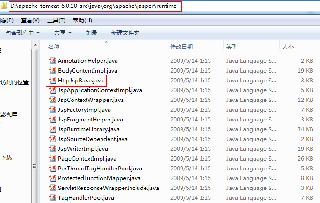python 在threading中如何處理主進程和子線程的關系
之前用python的多線程,總是處理不好進程和線程之間的關系。后來發現了join和setDaemon函數,才終于弄明白。下面總結一下。
1.使用join函數后,主進程會在調用join的地方等待子線程結束,然后才接著往下執行。
join使用實例如下:
import timeimport randomimport threading class worker(threading.Thread): def __init__(self): threading.Thread.__init__(self) def run(self): t = random.randint(1,10) time.sleep(t) print 'This is ' + self.getName() + ';I sleep %d second.'%(t) tsk = []for i in xrange(0,5): time.sleep(0.1) thread = worker() thread.start() tsk.append(thread)for tt in tsk: tt.join()print 'This is the end of main thread.'
運行結果如下:
# python testjoin.py This is Thread-3;I sleep 2 second.This is Thread-1;I sleep 4 second.This is Thread-2;I sleep 7 second.This is Thread-4;I sleep 7 second.This is Thread-5;I sleep 7 second.This is the end of main thread.
這里創建了5個子線程,每個線程隨機等待1-10秒后打印退出;主線程分別等待5個子線程結束。最后結果是先顯示各個子線程,再顯示主進程的結果。
2. 如果使用的setDaemon函數,則與join相反,主進程結束的時候不會等待子線程。
setDaemon函數使用實例:
import timeimport randomimport threading class worker(threading.Thread): def __init__(self): threading.Thread.__init__(self) def run(self): t = random.randint(1,10) time.sleep(t) print 'This is ' + self.getName() + ';I sleep %d second.'%(t) tsk = []for i in xrange(0,5): time.sleep(0.1) thread = worker() thread.setDaemon(True) thread.start() tsk.append(thread)print 'This is the end of main thread.'
這里設置主進程為守護進程,當主進程結束的時候,子線程被中止
運行結果如下:
#python testsetDaemon.py This is the end of main thread.
3、如果沒有使用join和setDaemon函數,則主進程在創建子線程后,直接運行后面的代碼,主程序一直掛起,直到子線程結束才能結束。
import timeimport randomimport threading class worker(threading.Thread): def __init__(self): threading.Thread.__init__(self) def run(self): t = random.randint(1,10) time.sleep(t) print 'This is ' + self.getName() + ';I sleep %d second.'%(t) tsk = []for i in xrange(0,5): time.sleep(0.1) thread = worker() thread.start() tsk.append(thread)print 'This is the end of main thread.'
運行結果如下:
# python testthread.py This is the end of main thread.This is Thread-4;I sleep 1 second.This is Thread-3;I sleep 7 second.This is Thread-5;I sleep 7 second.This is Thread-1;I sleep 10 second.This is Thread-2;I sleep 10 second.
補充知識:Python Thread和Process對比
原因:進程和線程的差距(方向不同,之針對這個實例)
# coding=utf-8import loggingimport multiprocessingimport osimport timefrom threading import Threadlogging.basicConfig( level=logging.INFO, format='%(asctime)s 【 %(process)d 】 %(processName)s %(message)s')def func (i): # logging.info(f’子:{os.getpid()},t{i}’) return f’子:{os.getpid()},t{i}’def main (ctx): start01 = time.time() ts = [Thread(target=func, args=(i,)) for i in range(100)] [t.start() for t in ts] [t.join() for t in ts] end01 = time.time() - start01 logging.info(f'線程花費的時間:{end01}秒') start02 = time.time() ps = [ctx.Process(target=func, args=(i,)) for i in range(100)] [p.start() for p in ps] [p.join() for p in ps] end02 = time.time() - start02 logging.info(f'進程花費的時間:{end02}秒')if __name__ == ’__main__’: # windows 啟動方式 multiprocessing.set_start_method(’spawn’) # 獲取上下文 ctx = multiprocessing.get_context(’spawn’) # 檢查這是否是凍結的可執行文件中的偽分支進程。 ctx.freeze_support() main(ctx)
輸出:
2019-10-06 14:17:22,729 【 7412 】 MainProcess 線程花費的時間:0.012967586517333984秒2019-10-06 14:17:25,671 【 7412 】 MainProcess 進程花費的時間:2.9418249130249023秒
以上這篇python 在threading中如何處理主進程和子線程的關系就是小編分享給大家的全部內容了,希望能給大家一個參考,也希望大家多多支持好吧啦網。
相關文章:

 網公網安備
網公網安備